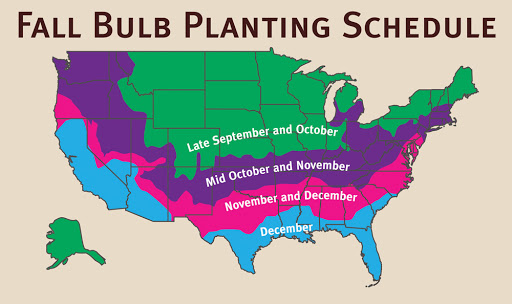I am a landscape designer and have been purchasing 1000's of spring flowering bulbs from A.D.R. Bulbs for 100's of clients in the last 20 years. The bulbs have always been of top quality and if there were any problems, they have been quick to rectify. My orders are often complicated with many varieties and different amounts and they have always filled and delivered everything on time with the best customer care and attention to detail. The pictures in their catalog and website are beautiful. I have visited their facility in NY and was impressed with all their handling equipment and organization. I would highly recommend A.D.R. Bulbs to anyone in the wholesale trade who wants to purchase quality bulbs and work with genuinely nice people.
Nancy Greenlee
, From The Ground Up
« Previous Plant | Next Plant »
Tulipa Long-lasting 'Two-Tone Mix'
Tulip
Tulip Two-Tone Mix is a long-lasting blend, featuring a diverse selection of bi-colored tulips that create a striking contrast throughout spring. Trialed and tested at The Tulip Barn Show Garden, this mix was developed for mass plantings and U-Pick tulip festivals, ensuring an extended bloom period that keeps fields vibrant for weeks.
This mix includes many varieties, spanning multiple tulip groups, including Triumph, Darwin Hybrid, Double, Lily Flowering, and Single Late varieties, offering a dynamic, ever-changing floral showcase. Tulips in this mix reach 14 to 28 inches tall and thrive in full sun with well-drained soil.
$198.00
reg: $264.00
Tulipa Calculator
When should I plant Tulipa Long-lasting 'Two-Tone Mix'?

Growing and Maintenance Tips for Tulipa Long-lasting 'Two-Tone Mix'
Planting: Plant in fall when soil temperatures drop below 55°F. Use mechanical planters or mass-planting tools to place bulbs 6–8 inches deep, pointed end up. For extended bloom and color layering, stagger varieties by flowering time and hue.
Spacing: Set bulbs 4–6 inches apart, or slightly closer for maximum coverage. Blocks of a single variety offer uniformity and simplify maintenance in large displays.
Light: Choose open, sunny areas to ensure even bloom, strong stems, and color consistency. Light shade is tolerated but may reduce overall performance.
Soil: Use well-drained, neutral to slightly acidic soil (pH 6–7). In heavy or compacted locations, amend or raise beds to improve drainage and prevent rot, especially in high-traffic settings.
Watering: Water after planting to settle bulbs. In spring, irrigate only during prolonged dry spells—avoid overwatering, which can shorten bloom life and promote disease.
Temperature & Dormancy: Tulips need 12–16 weeks of cold (below 50°F) to initiate strong root systems and flowering. In warm zones, pre-chill bulbs before planting.
Fertilization: Apply a balanced bulb fertilizer at planting and again in early spring. Slow-release or liquid formulas are especially useful in public or commercial plantings.
Pests: Squirrels may dig newly planted beds—use mesh, mulch, or repellents as needed. Deer will eat buds and foliage in early spring, so install fencing or apply repellents in vulnerable areas.
Disease: To prevent Botrytis (Tulip Fire), use only healthy bulbs and plant in sunny, well-aerated spots. Avoid overhead watering. Remove and destroy any infected foliage—never compost it. Rotate sites annually and do not replant in affected locations for at least three years.
Plant Characteristics
Additional Information
| Height | 14-24 Inches |
| Spread | 4-6 Inches |
| Spacing | 4-6 Inches |
| Hardiness Zone | 3-8 |
| Color |
Multi-Color |








Check back soon for additional details.